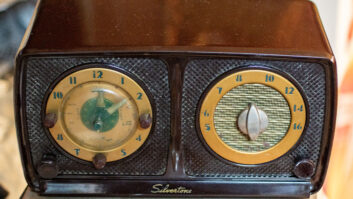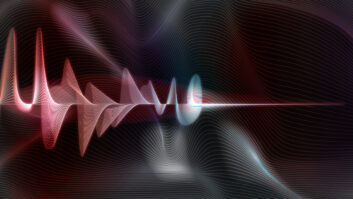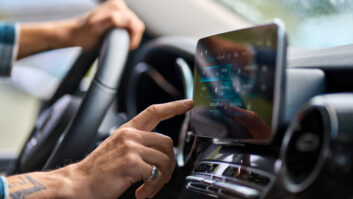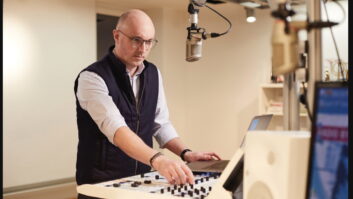Pity the poor general managers. They have to increase revenue every year, usually with mature radio brands. Events and concerts can only do so much. After some good ratings, they may be able to drive spot rates higher. But what they really need is more inventory to sell.
In this edition of 21st Century PD, we examine two small-market radio clusters that are creating revenue with new online media sites. These aren’t brand extensions, but totally new brands created, as they say, “out of whole cloth” — or in this case, out of the power of local radio.

CASE STUDY NO. 1: CLARKSVILLENOW.COM
Meet Katie Gambill, president/general manager of Saga Communications’ radio cluster in Clarksville, Tenn., a market of 200,000 that’s about an hour northwest of Nashville, Tenn.
That’s just far enough and big enough to feel separate from Music City. “Local” TV is from Nashville, though, and Clarksville’s local newspaper is part of the centrally-operated “USA Today Network” — but (Katie is too nice to say this) sometimes it doesn’t feel that local.
Seizing the opportunity to operate a local online news source, ClarksvilleNow.com was born on April 1, 2010. It’s the third-highest billing property in what is now an eight-brand media cluster, delivering over 2 million pageviews per month.

If you tour the site, you might learn that some houses and cars were vandalized, that nearby Fort Campbell will text an emergency test alert tomorrow, and that a local high school is headed to the state basketball tournament. What you won’t see — without close examination — is a website that’s owned by a radio company.
“It’s important for ClarksvilleNow to be its own brand in order to have news credibility. It’s a partner to the stations, not a vehicle to promote them,” says Gambill.
Instead, the stations and the site find more organic ways to refer to each other. Drivetime news originates from the “ClarksvilleNow newsroom,” for example.
ClarksvilleNow has been known to run stories about its sister stations’ events. But Gambill says, “We don’t just post radio logos.”
Gambill cites two things to keep in mind if you’re considering an online startup:
1. It’s a commitment. In their case, local news is “24/7. If a tornado happens on Saturday night at 9:30, you’re working,” she says.
2. There has to be a need. “You have to figure out what is missing in the community and fill that void.”

CASE STUDY NO. 2: BACKYARDBEND.COM
In beautiful central Oregon, along the eastern edge of the Cascades, Bend Radio Group Owner Jim Gross was shown his own opportunity in September of 2014 by his son Charlie, 19 years old at the time.
Charlie sent his dad a video on his phone of some friends doing ski jumps on the nearby Three Sisters peaks. Jim asked, “When was this taken, last spring?” “No, Dad, they hiked up, shot this video, edited and sent it during their walk back down. Right now!”
If you’ve spent time at an outdoor sports area like Bend lately, you’ve probably noticed that younger skiers, snowboarders and surfers love to share their photos and videos with friends via text and social media.
Gross got to thinking — “What if we give them a larger stage?” After all, the locals may have to work to pay the bills, but they’re always curious about what’s happening outside at that very moment.
Working with Steven Wood, a developer friend in southern California, Gross built BackyardBend.com, where you’ll find lots of “UGC” (user generated content), plus weather and lift conditions, and things to do indoors, too.

Turn on your phone’s geo-tagging, take a picture or video and post it on Instagram or Twitter with the hashtag “#BackyardBend,” and the site instantly places it on a map, showing where it was taken and when. So far, there’ve been over 25,000 posts from 15,000 users, and having invested the time and money to develop the technology, Gross is looking to partner with other radio groups in resort communities.
Bend Radio Group Operations Manager Mike Flanagan directs his DJs to refer to BackyardBend’s content on-air, and BackyardBend helps promote their concerts and events. But Flanagan says the cross-promotion is subtle.
“BackyardBend is cool because it’s so relevant to the lifestyle of our listeners. Our stations benefit more if they simply show that they’re relevant, too, that they deserve to be on BackyardBend.”
Gross thinks digital content is a huge untapped opportunity for radio, “but it isn’t about ‘following’ or ‘liking’. Our DJs aren’t Kardashians, so who cares? Who wants to be friends with people who only talk about themselves? Our motto is ‘Community Inspired,’ and we think that’s what digital should be — a place to share your own real life moments.”
As for the constant need to grow revenue, if we’re in the “radio” business, commercial inventory will always be limited. If, instead, we’re in the business of providing compelling local content — on any medium — the possibilities are endless.
As a veteran radio programmer and consultant, Dave Beasing is known for pioneering new formats and marketing ideas. His latest venture, Fryman Canyon Studios in Los Angeles, specializes in audio that brands, podcasts for national advertisers.







